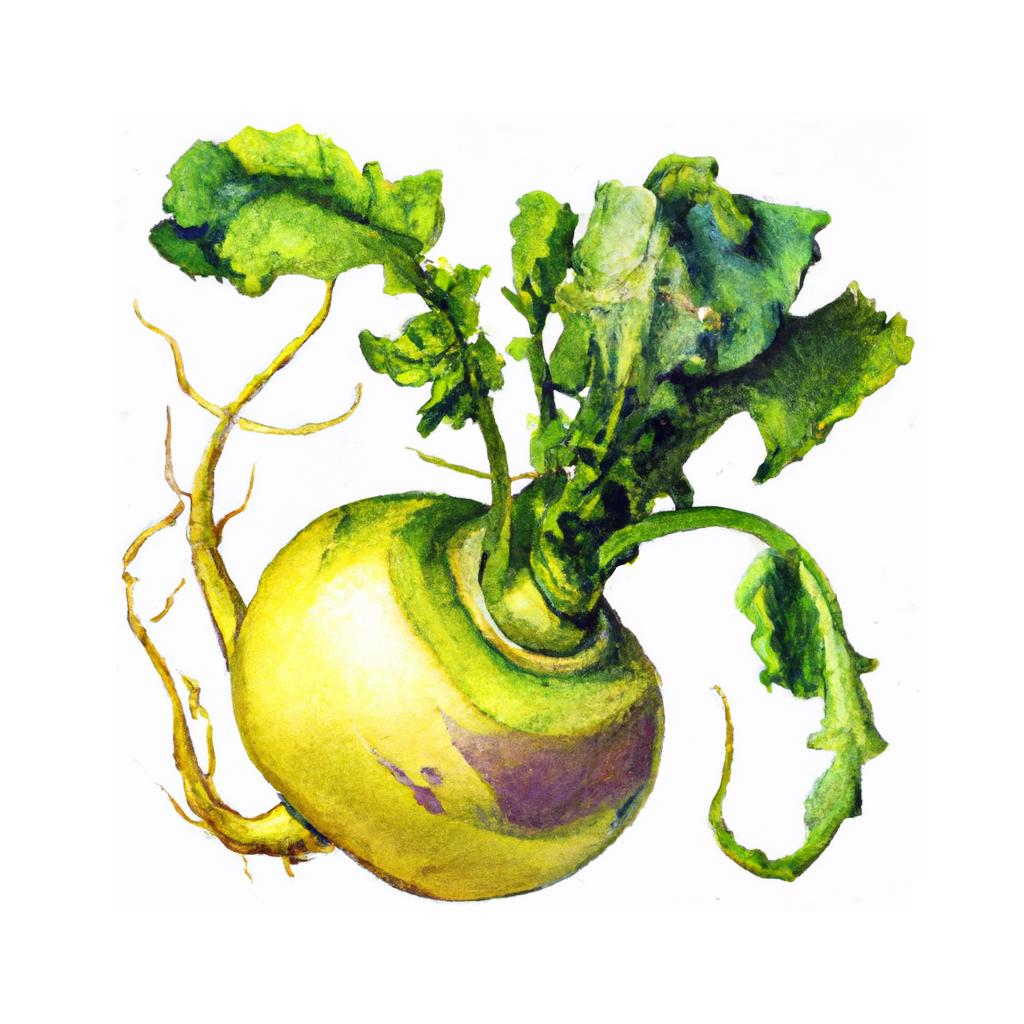
Turnips (Brassica rapa) are root vegetables belonging to the Brassicaceae family, which also includes cabbage, mustard, and kale. They are grown for their edible storage roots and nutritious leafy greens. Turnips have been cultivated for thousands of years, with archaeological evidence suggesting that they were originally domesticated around 3000 BC in the Middle East.
This versatile vegetable can be consumed in a variety of ways, such as raw, roasted, boiled, or mashed. Turnips have a sweet and slightly peppery flavor, with a texture similar to potatoes when cooked. The leafy greens provide a slightly bitter taste, which complements the sweetness of the storage root. High in vitamin C and packed with dietary fiber, turnips contribute to a healthy diet.
In ancient Greek and Roman cultures, turnips were considered a significant food source, not only for humans but also for livestock. The Greeks even made turnip-shaped coins to mark the importance of this crop. Due to their ease of cultivation and their ability to grow well in cold climates, turnips have long been a staple vegetable in Europe, particularly in Scandinavia, where they are known as 'swede' or 'rutabaga'.
Turnips complement a wide range of dishes, pairing well with herbs like rosemary, thyme, and dill. They are often used in soups and stews, but can also be prepared as the main ingredient in dishes like turnip gratin or glazed turnips. Mashing turnips with potatoes creates a unique, flavorful side dish, and adding sliced turnips to salads lends a crisp, refreshing texture. Roasting turnips with olive oil and your favorite spices enhances their natural sweetness and makes for a delicious and nutritious snack.
This is advice is most applicable to growers in the UK, you may need to adjust the timings if you live somewhere with a different climate and/or seasons.
| Month | Tasks | Advice |
|---|---|---|
| January | - | - |
| February | Prepare garden bed for planting, | Start preparing the garden bed by clearing any weeds and debris, and enriching the soil with compost. |
| March | Sow seeds indoors, | Sow turnip seeds in small pots or trays indoors. This will give them a head start before transplanting them outdoors. |
| April | Sow seeds outdoors, Plant out seedlings, | Sow turnip seeds directly into the ground or plant out seedlings that have been started indoors. |
| May | Thin seedlings, Water regularly, | Thin out seedlings to give each plant enough space to grow. Water the plants regularly to maintain evenly moist soil. |
| June | Harvest early turnips, | You can start harvesting early turnips as they reach their desired size. |
| July | Harvest early turnips, | Continue harvesting early turnips. |
| August | Sow seeds for fall crop, | Sow turnip seeds directly into the ground for a fall crop. |
| September | Water regularly, | Keep the soil consistently moist as turnips continue to grow. |
| October | Harvest fall crop, | Begin harvesting your fall crop of turnips as they reach their desired size. |
| November | Harvest remaining turnips, | Harvest any remaining turnips before the ground freezes. |
| December | - | - |